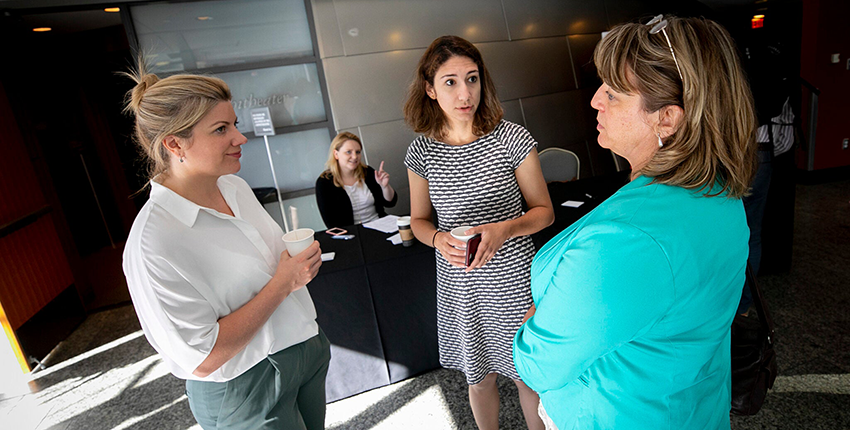
Experts who are adept at handling massive scientific data sets are examining ways that the revolution sweeping their field can address one of medicine’s biggest challenges: the spread of drug-resistant microbes.
Maha Farhat, assistant professor of biomedical informatics and one of the organizers of a symposium on the topic along with Michael Baym, said antibiotic resistance has reached “epidemic proportions” but, with more data available than ever, there’s hope that medical science will discover ways to combat it. What’s needed, however, are better tools to analyze that data, she said.
“It really threatens one of the most core therapies that define modern medicine,” Farhat said. “We do think the problem of antibiotic resistance is at such scale that we should come at it from many different angles.”
The symposium, “Data-Powered Strategies to Counteract Antibiotic Resistance,” held Wednesday at Harvard Medical School’s New Research Building on the Longwood campus, featured speakers who focused on three major areas: detecting and diagnosing drug-resistant microbes, applying big data to the problem, and developing new drugs to fight resistance.
Speakers came from both academia and industry and represented Harvard, Massachusetts Institute of Technology, Imperial College London, McMaster University, Boston Children’s Hospital, Entasis Therapeutics, and Accelerate Diagnostics.
Harvard Medical School Dean George Daley introduced the session, calling the years after penicillin first became widely used in the 1940s a time of relative innocence. Penicillin was so effective in fighting infections that previously would have been fatal that it transformed not just the hospital, but the battlefield.
The rise of drug resistance in the decades since, however, has resulted in some 2 million drug-resistant infections that kill 23,000 people in the U.S. each year. The resistance also costs the medical industry billions a year in higher medical costs.
Read full article in Harvard Gazette